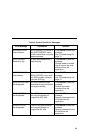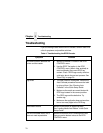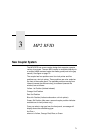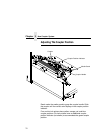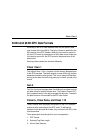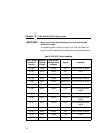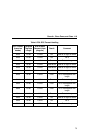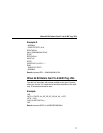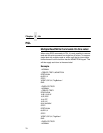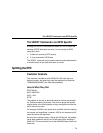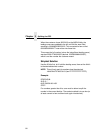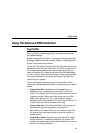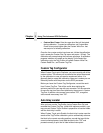
Tag Profiler
81
Using The Advanced RFID Calibration
Tag Profiler
The Tag Profiler maps the tag position with optimized read and
write power settings.
Before running the Tag Profiler, it is important that the proper Gap
Sensing procedure has been followed. (Refer to “Calibrating The
Printer” in the
Quick Setup Guide
.)
To use the Tag Profiler, first ensure that the tag type that you have
selected from the Tag Type menu (see “Tag Type” on page 23 for a
list of supported tag types) either matches the tag type you are
about to calibrate or is at least of the same Class and data length
(i.e. 64 or 96 bits). Next, check that Custom Tag is set to Duplicate.
The correct defaults will then be set for Custom Tag Class and
Custom Tag Len (length).
Prior to initiating the calibration cycle, the Tag Profiler can be
optimized by setting appropriate limits on the following four custom
entries:
• Custom Start Pos. Identifies the starting position of the
calibration scan. The default will start at the Top Of Form
(TOF). To avoid inefficient scanning at points far away from the
target tag, set the Custom Start Pos. within one inch of the
center of the physical tag. E.g., if the center of the tag is
physically three inches from the TOF, set Custom Start Pos. to
2 inches (one inch before the center of the tag).
• Custom Scan Len. The distance the Tag Profiler will scan to
determine the optimum tag position. For improved
performance, set Custom Scan Len. to 2 inches or less. This
will prevent the printer from looking for a tag far beyond its
actual location.
• Custom Min. Power. Sets the lower level that will be tested
during calibration. To speed up calibration, set Custom Min.
Power to two points lower than the Custom Read Pwr. that was
set prior to initiating calibration.



